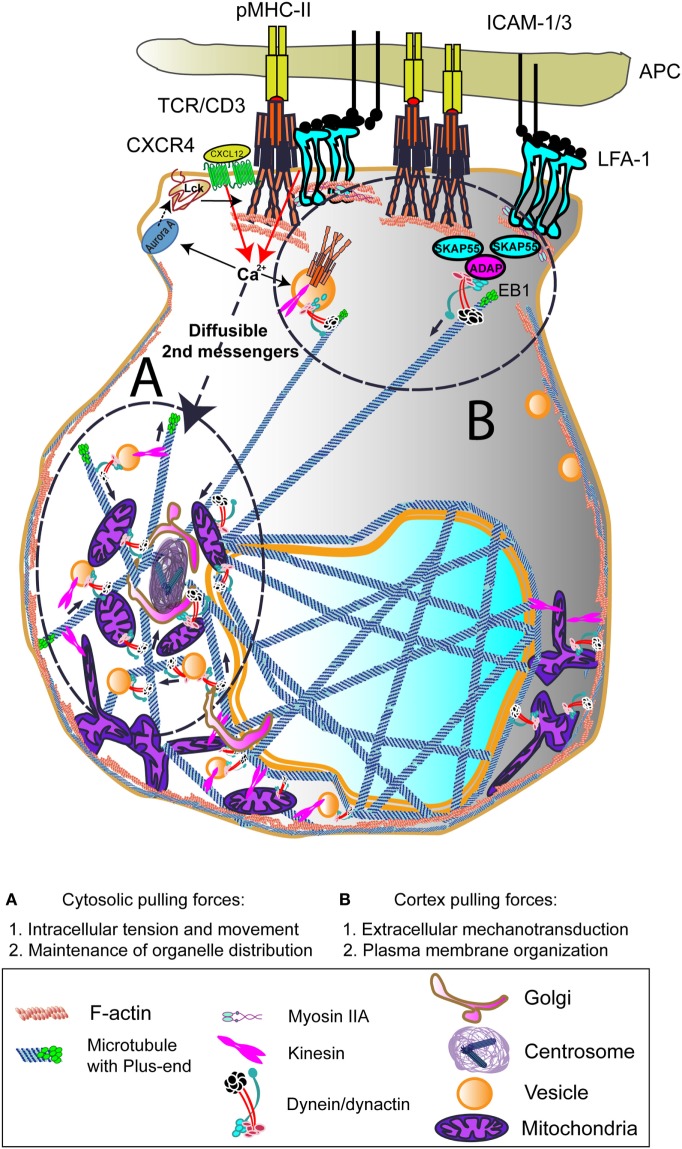Figure 1.
Dynein-driven forces acting on centrosome polarization during early T cell activation. Centrosome polarization upon T cell receptor (TCR) activation can be mediated by cortex and/or cytosolic pulling forces. TCR, lymphoctye function-associated antigen-1 (LFA-1), and CXCR4 binding to its ligands involve rapid increases in Ca2+ intracellular influx. This can activate Aurora A, which will favor leukocyte C-terminal Src kinase (Lck) activation and subsequent CD3 ITAMs phosphorylation at the CD3/TCR complex. The activation of the centrosome and associated molecules is probably due to diffusible secondary messengers such as the Ca2+. The interaction of dynein/dynactin complexes and other motors with intracellular organelles and the cytoskeleton may induce the force needed to move the centrosome toward the immune synapse (IS). At the IS, the interaction with TCR/CD3/SKAP55/ADAP or LFA-1/SKAP55/ADAP may serve to dock growing microtubules (MTs) and to pull the centrosome to the IS. End-binding 1 (EB1) may interact directly to CD3ζ subunit of the CD3/TCR complex. The growth and shrinkage of MTs at this zone would also create pulling forces. The images in the figure are not scaled.

